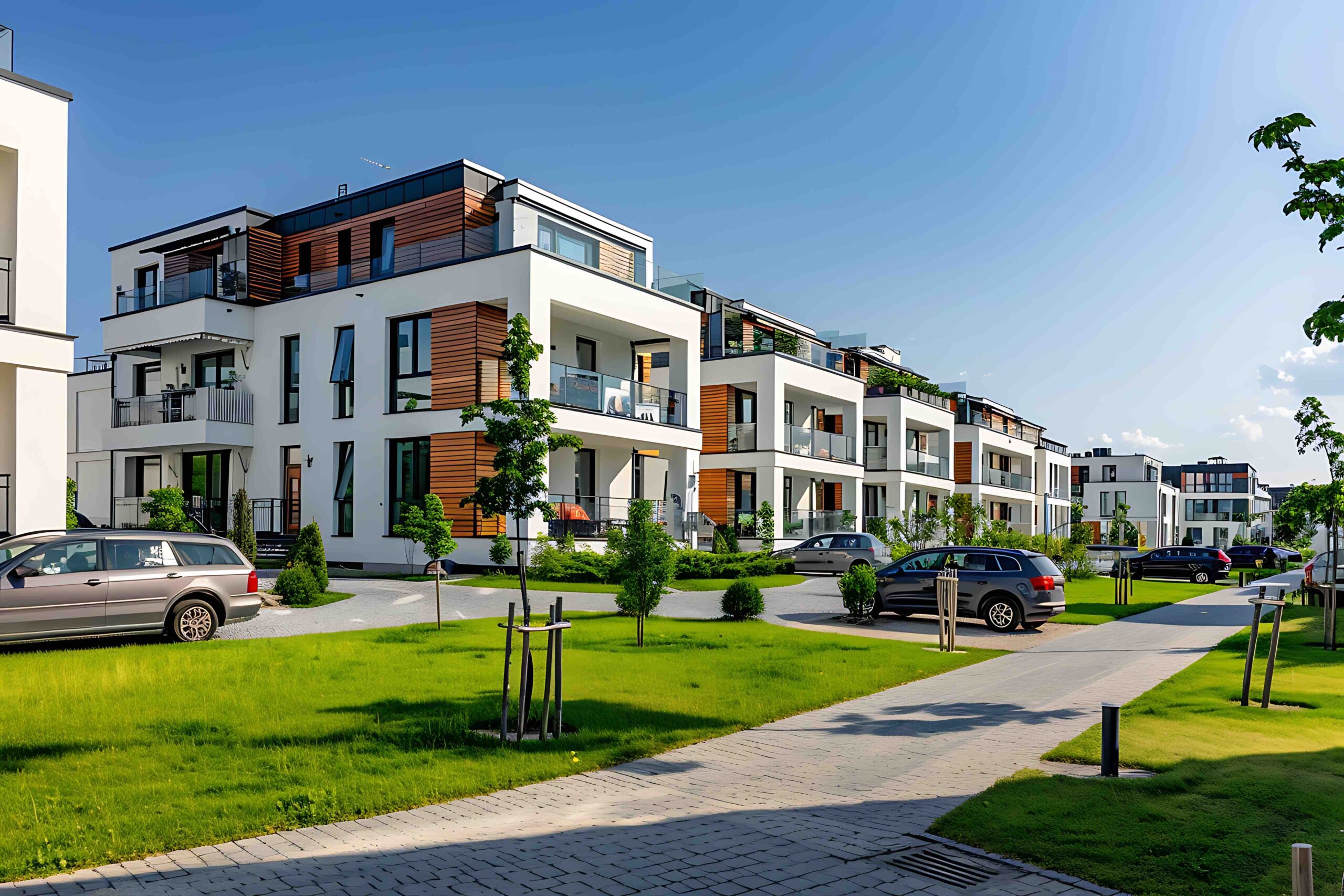The Importance of Community in Property Development.

In the realm of property development, the concept of “community” is gaining renewed significance. Gone are the days when developments were judged solely by their architectural design or the quality of their amenities. Today, successful property developments are those that foster a sense of belonging, connectivity, and well-being among residents. The creation of vibrant, inclusive communities is now recognized as a key driver of long-term value, both for developers and the people who live and work in these spaces.
- Enhancing Quality of Life
One of the primary reasons community is important in property development is its direct impact on the quality of life for residents. A well-planned community development goes beyond providing housing; it creates an environment where people feel connected to their neighbors and have access to essential services and amenities.
- Social Interaction: Developments that incorporate communal spaces such as parks, playgrounds, and community centers encourage social interaction among residents. These spaces act as hubs where people can gather, fostering relationships and a sense of belonging.
- Access to Amenities: Thoughtfully designed communities ensure that residents have easy access to amenities such as schools, healthcare facilities, shopping centers, and recreational areas. This convenience enhances the overall living experience, making the development more desirable.
- Safety and Security: A strong sense of community can contribute to a safer environment. When residents know and trust their neighbors, they are more likely to look out for one another, reducing the likelihood of crime and enhancing the overall security of the area.
- Social Cohesion and Inclusivity
Community-focused property developments promote social cohesion and inclusivity by bringing together people from diverse backgrounds. This is particularly important in urban areas, where population density and cultural diversity are high.
- Mixed-Use and Mixed-Income Developments: These developments combine residential, commercial, and recreational spaces within the same area, catering to people of different income levels and lifestyles. This diversity encourages social interaction and breaks down barriers between different social groups, leading to a more inclusive community.
- Cultural and Recreational Facilities: Providing spaces for cultural activities, sports, and recreation helps to bridge gaps between different segments of the community. These facilities offer opportunities for people to come together, celebrate their differences, and find common ground.
- Community Programs and Events: Developers who invest in community programs and events, such as farmers’ markets, festivals, and workshops, help to create a vibrant social fabric. These activities bring residents together and build a sense of shared identity and purpose.
- Economic Benefits and Sustainability
Creating a strong community within a property development can have significant economic benefits, both for the developers and the local area.
- Increased Property Values: Developments that foster a strong sense of community often see higher property values and demand. Buyers and renters are willing to pay a premium for properties in areas where they feel connected and engaged. This demand drives up property prices, benefiting both the developers and property owners.
- Business Opportunities: A well-developed community attracts businesses, from local shops and cafes to larger enterprises. These businesses thrive in vibrant communities where there is a steady flow of customers. In turn, the presence of businesses adds to the appeal of the community, creating a positive feedback loop that enhances economic growth.
- Sustainability and Longevity: Communities that are well-planned and supported are more likely to be sustainable in the long term. When residents feel invested in their community, they are more likely to stay for the long haul, reducing turnover rates and ensuring the ongoing success of the development.
- Health and Well-being
The built environment has a profound impact on the physical and mental health of residents. Community-oriented property developments can contribute to better health outcomes by creating spaces that promote active lifestyles and mental well-being.
- Green Spaces and Active Lifestyles: Access to parks, walking trails, and sports facilities encourages residents to engage in physical activity, which is essential for maintaining good health. Green spaces also provide a natural setting for relaxation and stress relief, contributing to better mental health.
- Mental Well-being: A sense of community can significantly impact mental well-being. People who feel connected to their neighbors and engaged in their community are less likely to experience feelings of isolation and loneliness, which are common in urban settings. Social support networks within a community can also provide a buffer against stress and mental health challenges.
- Healthy Living: Community-focused developments often prioritize access to fresh food, healthcare services, and wellness facilities. This emphasis on health and well-being makes it easier for residents to lead healthy lives, further enhancing the appeal of the development.
- Environmental Responsibility
Community-oriented developments are often designed with environmental sustainability in mind. By fostering a sense of collective responsibility among residents, these developments can encourage more sustainable behaviors and practices.
- Shared Resources: Developments that include shared resources, such as community gardens, car-sharing schemes, and renewable energy installations, encourage residents to adopt more sustainable lifestyles. These initiatives reduce the overall environmental footprint of the community and promote a culture of sustainability.
- Sustainable Infrastructure: Developers who prioritize community often incorporate sustainable infrastructure, such as energy-efficient buildings, green roofs, and water conservation systems. These features not only benefit the environment but also reduce operating costs for residents, making the development more attractive in the long term.
- Community-Led Sustainability Initiatives: Engaged communities are more likely to take the initiative in sustainability efforts, such as recycling programs, tree planting, and local clean-up campaigns. These grassroots efforts can have a significant positive impact on the environment and further strengthen the community bond.
- Long-Term Success and Reputation
For property developers, focusing on community is not just a social responsibility; it’s a smart business strategy. Developments that prioritize community tend to be more successful in the long term and can significantly enhance a developer’s reputation.
- Brand Loyalty: Developers who are known for creating vibrant, well-connected communities can build strong brand loyalty. Buyers and investors are more likely to seek out developments by these developers, knowing that they will be investing in a high-quality, community-focused environment.
- Positive Word of Mouth: A strong sense of community leads to satisfied residents who are more likely to recommend the development to others. Positive word of mouth can be a powerful marketing tool, attracting new buyers and tenants to the development.
- Legacy and Impact: Developers who focus on community can leave a lasting legacy, creating spaces that are not just profitable but also make a meaningful contribution to society. This can enhance the developer’s standing in the industry and lead to future opportunities for impactful projects.
Conclusion
The importance of community in property development cannot be overstated. In today’s market, where people value connectivity, inclusivity, and quality of life, creating a strong community is essential for the success of any development. By prioritizing community, developers can enhance property values, attract businesses, promote sustainability, and improve the overall well-being of residents.
For developers, embracing a community-first approach is not just about meeting market demands; it’s about creating developments that stand the test of time and contribute positively to society. As the property development landscape continues to evolve, those who invest in community will be well-positioned to lead the industry into the future, delivering developments that are not only profitable but also meaningful and sustainable.


Shahira
This is awesome. Community is very important.